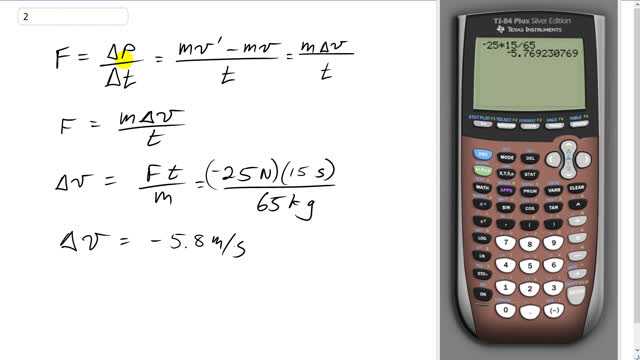
A constant friction force of 25 N acts on a 65-kg skier for 15 s on level snow. What is the skier’s change in velocity?

In order to watch this solution you need to have a subscription.
This is Giancoli Answers with Mr. Dychko. When Newton first made his second law, he actually wrote F equals rate of change of momentum instead of writing ma; this is the way he originally thought of it. So we have change in momentum divided by change in time and we can rewrite this in order to figure out change in velocity which is what the question is asking us for. So change in momentum is the final momentum mass times the final velocity, which is what the prime means, I could have written vf but I'm writing v prime instead because that's the notation that seems to be used in this chapter where prime represents after the event, after the collision, or after the force has been applied and so on. So this is mv prime minus mv original and so from this, you can factor out the m because the skier's mass is constant and so we have mass times final velocity minus initial velocity which is Δv and so just rewrote it here and then we can do a bit of algebra to solve for Δv and so that gives us the change in velocity. So multiplied by t over m on both sides and then switch the sides around to isolate the unknown Δv on the left so Δv is force times time over mass. Now if we have this person moving to the right say, skier has some velocity initial and we'll say that that's the positive direction then friction is gonna be always opposing this velocity so that means it's acting to the left and so the friction is this way which means that it is in the negative direction so that's why I have a negative 25 there. So negative 25 newtons times 15 seconds— duration during which the force is applied— divided by 65 kilograms which gives negative 5.8 meters per second with the change in the skier's velocity. So the skier's gonna slow down by 5.8 meters per second.